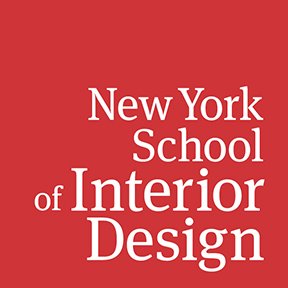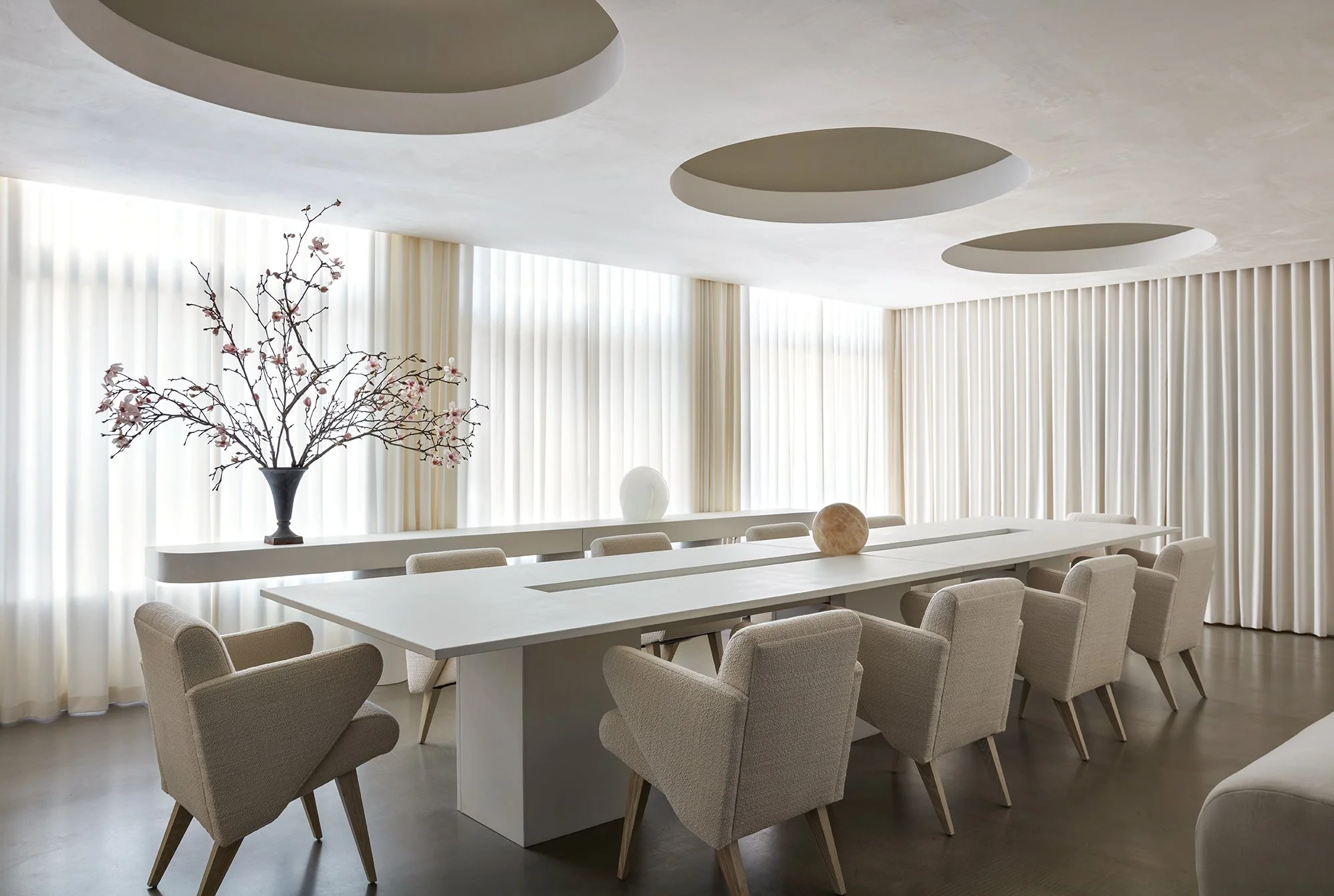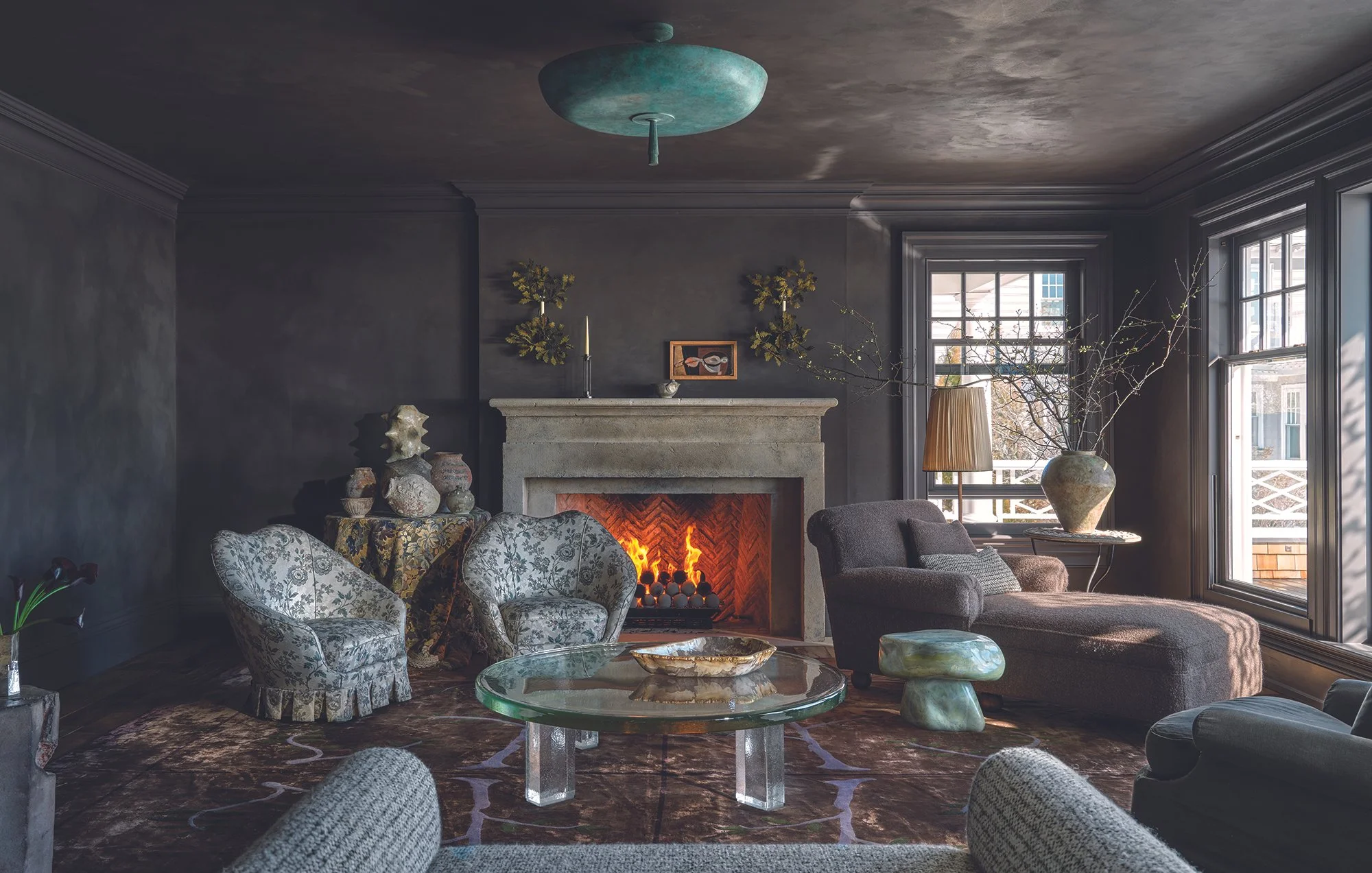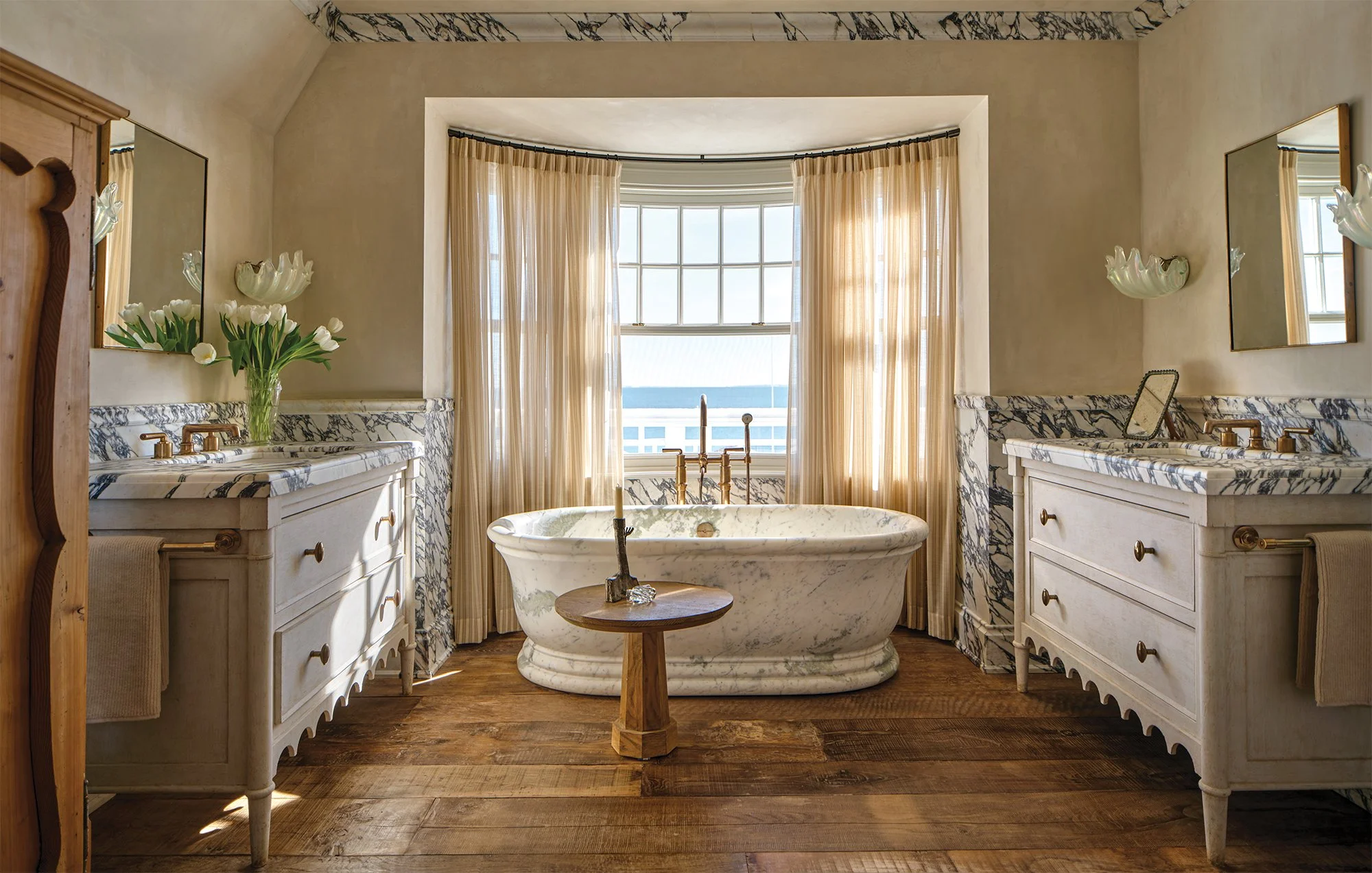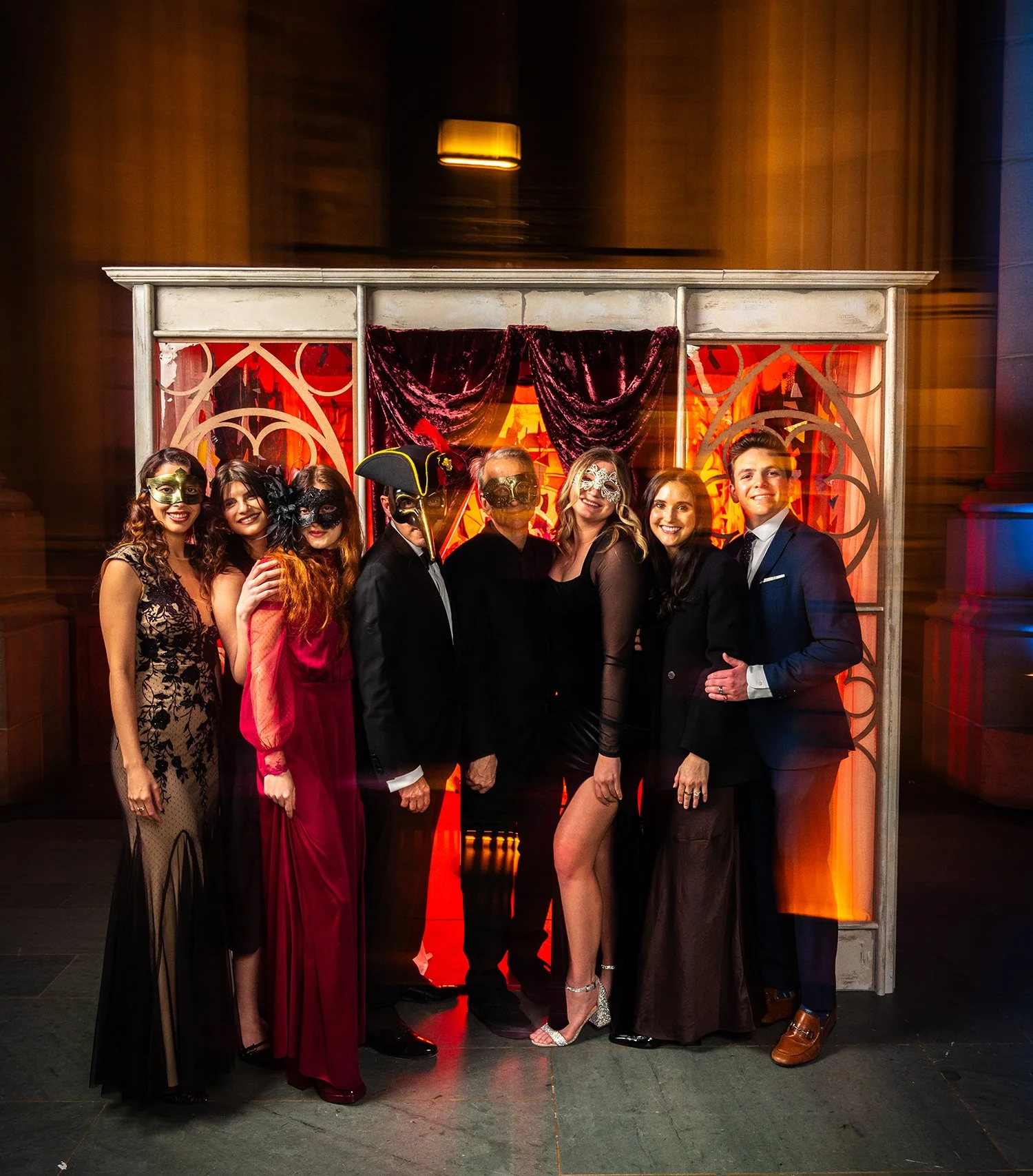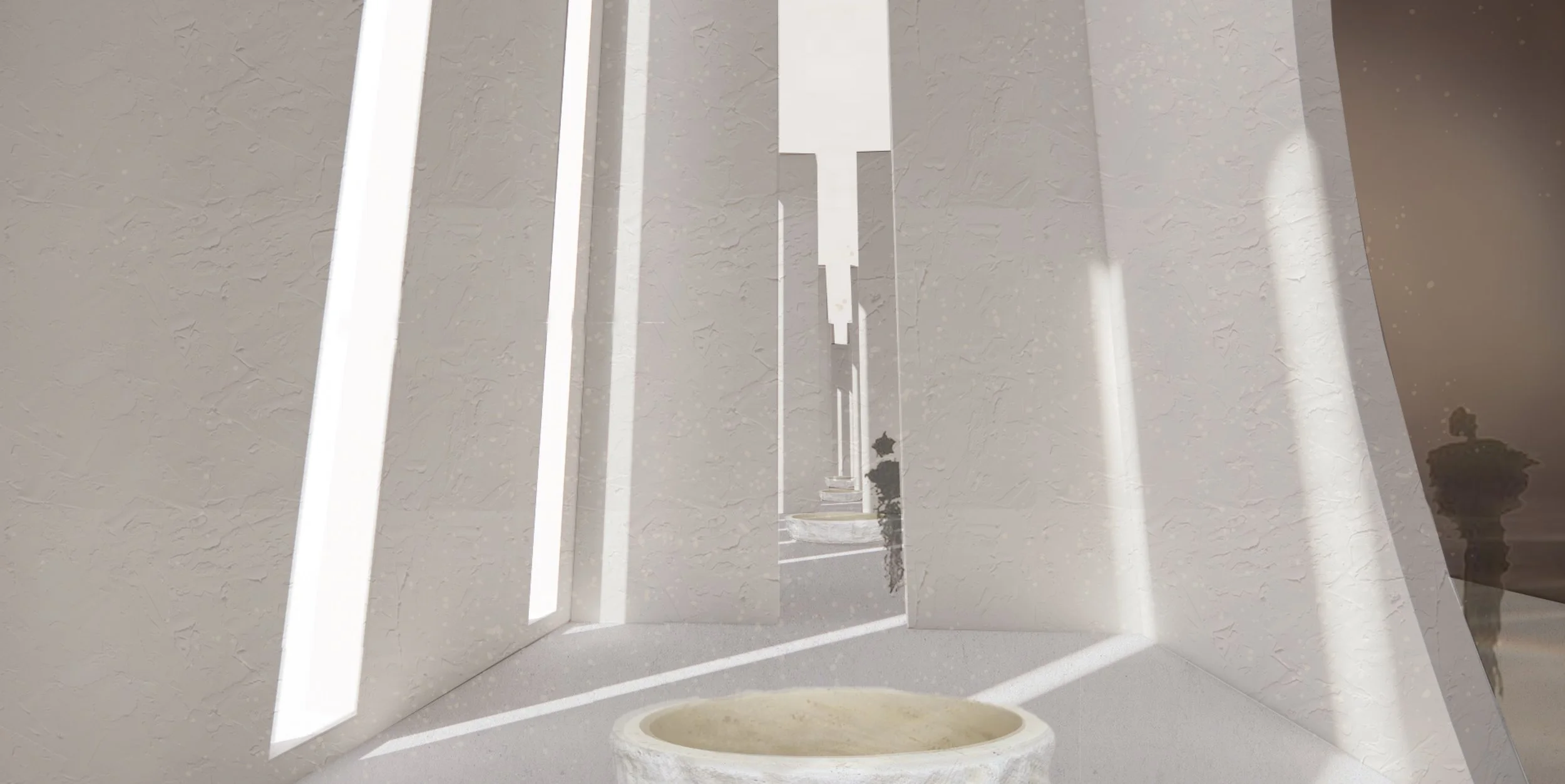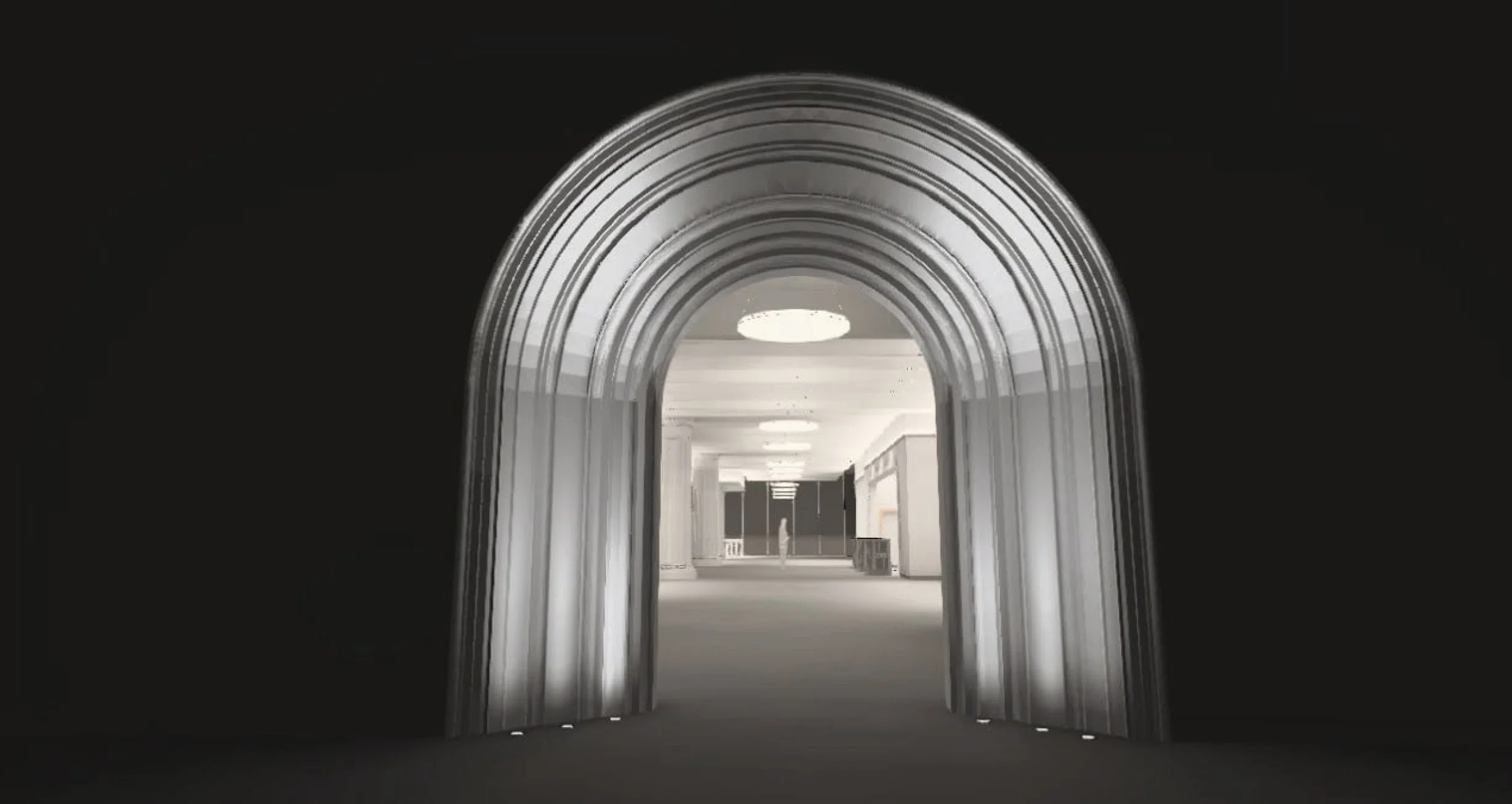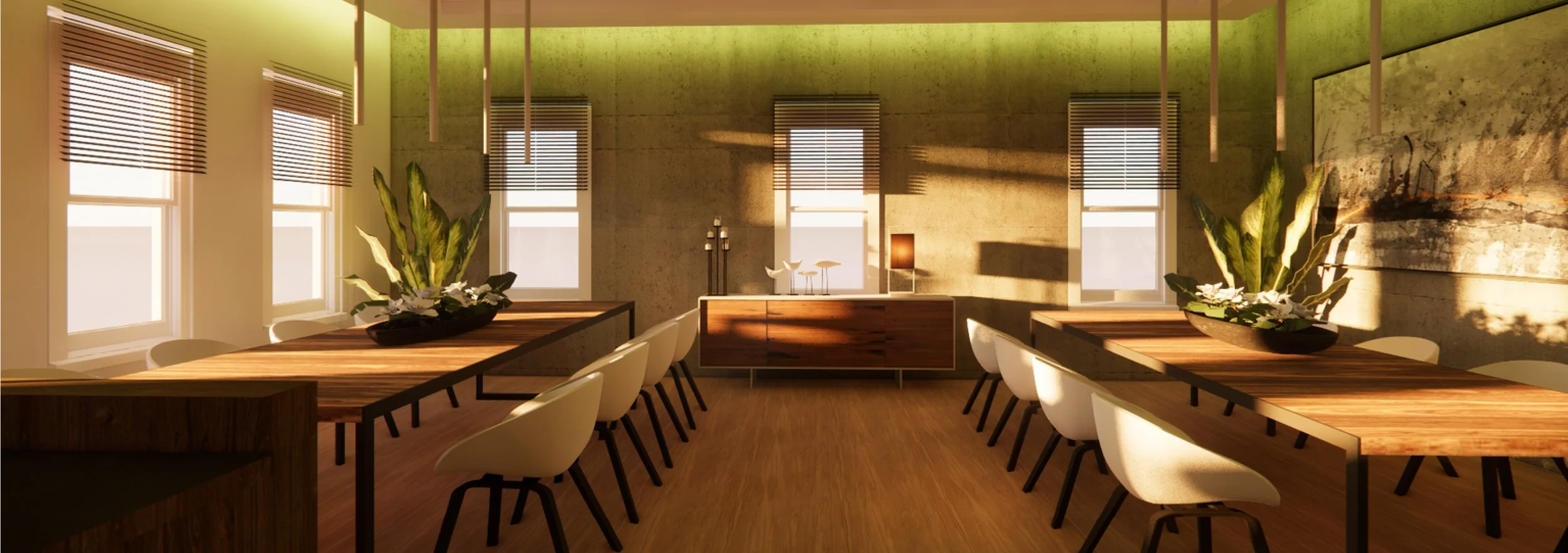Collaborative by Design
Alum Holly Hayden Taylor ’09 (BFA), CID, NCIDQ, executive design director of Jeremiah Brent Design, and NYSID faculty member, on cultivating the culture of positivity that unlocks creativity .
Holly Hayden Taylor
In 2019, Holly Hayden Taylor was loosely considering founding her own firm after over a decade of experience at Gensler, Michael Smith Inc., and Simon-Wallace Design. Then, she was introduced to Jeremiah Brent through a shared representative at 1stDibs. She felt an instant affinity with Brent’s vision and the team at his New York office. She says, “Right away, I loved the energy in that office, so I wanted to stay open to possibilities. My philosophy is to say yes to everything, until it’s an absolute no.” Initially, Brent offered her the opportunity to work for him part time, while she continued to teach several courses at NYSID. Hayden Taylor says that back then, Jeremiah Brent Design had five employees, with just two in New York and the rest in Los Angeles, so the company’s energy was “calm, serene… but always inspired!”
Just a few months later, this period of serenity ended, to be replaced with intense and electric creative collaboration, when Brent invited Hayden Taylor to Los Angeles to be the senior lead on his newest commercial project, and to become a full-time employee. “This was an easy ‘YES!’” Hayden Taylor says. The task was to convert two 1920s industrial buildings into a production studio and headquarters for TV producer Ryan Murphy, the force behind Glee and American Horror Story, among other shows.
At the time, Murphy was developing the bio-drama Halston, starring Ewan McGregor, Bill Pullman, and Rebecca Dayan. Brent and Hayden Taylor closely collaborated on a 80+ page concept document that drew on the life, work, and intention of the American fashion designer Roy Halston Frowick (aka Halston) as its inspiration in combination with silhouettes from the 1970s and 1930s. Hayden Taylor recalls it was “exhilarating and nerve-wracking” to produce a project of this scope for Ryan Murphy, a fellow visual artist well versed in design history. Says Hayden Taylor, “Designing a creative space for the ultimate creative was an honor. Jeremiah and I shared an emotional connection over this project. The whole experience was very meta, because Jeremiah and I were this design duo taking our cues from another design duo, Halston and Elsa Peretti. The synergy was incredible.” The result, with curving walls, sinuous furnishings, neutral colors, and cashmere drapery, thrilled the client. Brent promoted Hayden Taylor to Design Director several months into the project in Fall of 2019. Later, in 2024, she became executive design director of Brent’s AD100 design firm.
Studio and headquarters of Ryan Murphy Productions. Photo by Stephen Kent Johnson/OTTO.
Hayden Taylor reports that the empathy and openness Jeremiah Brent demonstrates on TV, especially in the popular, most recent season of Queer Eye, is genuine. “Jeremiah’s practice is rooted in authenticity and heart, and that’s very rare,” says Hayden Taylor. “What drew me to Jeremiah Brent Design is what keeps me there. Not only is Jeremiah a wonderful soul, but we also have a bond around our common goal to build a company culture that’s based on creativity, originality, and positivity. We believe if you give talented designers an opportunity to be great, paired with a constructive environment, they will produce their best work. I feel so honored that Jeremiah entrusts me to uphold this culture firm-wide.”
Studio and headquarters of Ryan Murphy Productions. Photo by Stephen Kent Johnson/OTTO.
Studio and headquarters of Ryan Murphy Productions. Photo by Stephen Kent Johnson/OTTO.
Jeremiah Brent Design is now an ELLE Decor A-List and AD100 interior design firm with 30 full-time employees and offices in New York and Los Angeles, a design division that executes residential, commercial, and hospitality projects, a media division, and a product development division. Most of their portfolio remains residential. Hayden Taylor is responsible for directing the design division of the company, hiring and managing staff for the design division, and overseeing the execution of projects from conception to construction. “I am a conduit for Jeremiah’s vision. His concepts are honored in the day-to-day details,” she says, “Our designers are deeply curious, energetically and intellectually close, and that allows us to approach design very conceptually and work in lockstep. Jeremiah and I want to hear what everyone has to say and make sure all designers have a voice and can develop their own design identity. Our concept and ideation processes are unique: it’s a bit of a ping-pong of ideas because we empower everyone to contribute.”
Her Education & First Break
Holly Hayden Taylor came to NYSID for her BFA right out of high school because, she says, “I knew I wanted to be an interior designer. I was sure, so a single-major college that focused on interior design, in one of New York City’s most romantic neighborhoods, felt right.” She reports the most useful thing about her NYSID education was that her teachers were all practicing designers with a wide variety of expertise within the interior design and architecture fields. “At NYSID, you get a different perspective from every teacher,” she says. “Some of my instructors had a theoretical and conceptual approach and taught how to parlay that into storytelling, while others focused on enforcing professional poise, etiquette, presentation skills, and public speaking, which are just as important. I carry all those lessons into my work every day.” She adds, “Anyone in my office or my class will tell you I am always stressing the importance of concept development and storytelling, while still harping on using proper line weights. Learning the vocabulary of drafting while I was at NYSID was so important. It’s another alphabet and an essential form of communication in design.”
Hayden Taylor graduated in 2009, in the middle of the Great Recession, when companies were downsizing, and architecture and design firms were laying off large numbers of employees. Nonetheless, she secured a job at Gensler before her formal graduation day. One reason was the advocacy of her NYSID thesis preparation instructor, Peter Brandt, who had been vice president and managing director of the New York Office of Gensler. She says, “Legend has it that Mr. Arthur Gensler himself came to the NYSID Thesis show and talked to Peter Brandt about my project. Mr. Brandt ultimately connected me with Robin Klehr Avia (regional managing principal for the Northeast region at Gensler) and that’s how I stepped into that incredible first opportunity.” Hayden Taylor says. “In those days, you could feel the gravity of the financial crisis in every project and industry. I spent the first years of my career providing companies with test-fits to show how they can condense 10 floors of employees to just 2 floors! But eventually, I was fortunate enough to be a participating designer for financial service firms, law firms, publishing houses, retail stores, and more. Having the privilege to work at Gensler was a direct product of establishing such a strong community through NYSID.”
Why She Became a Certified Interior Designer
In 2015, Hayden Taylor achieved a New York state license, allowing her to call herself a Certified Interior Designer (CID), the highest credential in the profession. In New York, applying for the state license requires passing the NCIDQ exam and also documenting a combined seven years of formal study and work experience. She says, “Wonderfully, at Gensler everyone is encouraged and incentivized to get certified in their area of expertise. They are really supportive, providing study groups and financial reimbursement after shining test scores. Gensler is competing for huge contracts, and having certified designers on their team ensures that their clients are getting the most qualified professionals.” She adds, “It’s meaningful to have my license because it brings legitimacy to my work. It shows people you have done your homework, and you want to be the best at what you do.”
What She Looks for in Hires
Hayden Taylor reports that her hiring requirements are very different for entry-level and senior employees, but some qualities are key at every level in her company. She says for entry-level hires, she’s looking for people with some formalized education in design or a related field (an AAS, BFA, or MFA) as well as a “exacting design eye” exhibited in the portfolio. AutoCAD and presentation skills are a requirement. She says that one of her most important pieces of advice for emerging designers is to do research about a company’s aesthetic before you apply, and to develop the self-knowledge to recognize when your design eye fits with a firm’s body of work. “When I am looking for entry-level designers, I’m also trying to find people who are emotionally healthy, centered, and confident, so that they will integrate well into the team and maintain our cultural pillars at Jeremiah Brent Design,” says Hayden Taylor. “Passion is everything in this job. However glamorous this industry can be at times, Jeremiah and I still crawl around behind a sofa looking for an outlet to plug in a lamp seconds before a ‘reveal,’ lint rolling ourselves before the clients knock on the door. A can-do attitude and willingness to jump in at any level of the job are critical in this business.” Among the recent students and alumni who have worked and/or interned at Jeremiah Brent Design are Jessica Beresford ’25 (AAS), Natalia Galpin ’21 (BFA), Addison Hansen ’24 (BFA), and Sarah Stevens ’21 (MFA1).
She adds that for senior designers, strong interpersonal, organizational, and communication skills are paramount. She says, “I am looking for designers who can run multiple projects successfully while being creatively fearless. The talent and design eye are so crucial, but so are clear budgets and organized Excel sheets!” She continues, “Designing as a group is an immersive process built on trust. We seek individuals who bring creativity, innovation, and unwavering dedication every day. It’s essential that we honor each person’s values, fostering an environment where everyone feels welcome to contribute.”
Why She Teaches at NYSID
Hayden Taylor teaches an online, synchronous section of Residential Design I, the first studio in the undergraduate programs at NYSID. “I absolutely love teaching at NYSID,” she reports, which is one reason she has chosen to keep teaching in one of the busiest times of her life. Hayden Taylor notes that there is circularity between her roles as an educator and as the executive director of Jeremiah Brent Design. “I am bringing to class what I am learning from work, and I am bringing to work what I am learning in class. Teaching blossoming design students the foundations reinforces what I know and helps me bring specialized communication techniques into my executive role.” Hayden Taylor is very fulfilled by having an impact on beginning designers at the outset of their journey. “The designer Margaret Mintz was my Residential (Design) I instructor and she was formative for me. She had such refined taste, was so helpful in bringing reality to our lessons, and could show us how best to control a wide-tip Prisma marker on vellum; she just knew everything!” she says. “I really hope I can be as impactful for others as Margaret Mintz was for me.” Hayden Taylor adds that Barbara Lowenthal (NYSID’s former associate dean) was another formative instructor during her time at NYSID. “Barbara took deep interest in concepts I would share with her and helped push me to turn them into design metaphors,” Hayden Taylor says. “And I would be remiss to not mention Dr. Ellen Fisher (NYSID’s dean and VP for Academic Affairs), who is such a unicorn in the industry in the best way. I was very fortunate to have Ellen as my instructor for many courses. I’ve learned so much from her and do my best to emulate her earnest approach.”
Family room of the Watch Hill, RI project. Photo by Trevor Tondro/OTTO.
The Best Interior Design Is Storytelling
There are many technical aspects of interior design–project management, adhering to building codes, software skills–that have little to do with artistry, but every once in a while, a dream project comes along to remind a practitioner that interior design is a highly symbolic and intimate form of storytelling. For Hayden Taylor, that project was a complete renovation of a historic family beach house in Watch Hill, Rhode Island, that Jeremiah Brent Design began in 2020. The clients wanted a “granny-chic coastal” aesthetic that honored the history of the home and the seaside community and anticipated the different ways the family used the space throughout the day as coordinated with their geographical location.
When the demolition crew broke through a plaster wall around a century-old brick fireplace, Brent and Hayden Taylor discovered something surprising. “More than a century ago, someone had drawn a two-dimensional portrait of a Victorian bust in the wet concrete.” recounts Hayden Taylor. The rough sketch, which was hidden for a century, captured the imagination of Brent and Hayden Taylor. This became a discrete motif throughout the house: an emblem on matchboxes and a reproduction on hand-painted Portuguese tiles in the dining room, as a tribute to residents of the past. Says Hayden Taylor, “Our process at Jeremiah Brent Design always starts with dynamic storytelling, and that’s what makes every interior unique.”
Family room of the Watch Hill, RI project. Photo by Trevor Tondro/OTTO.
